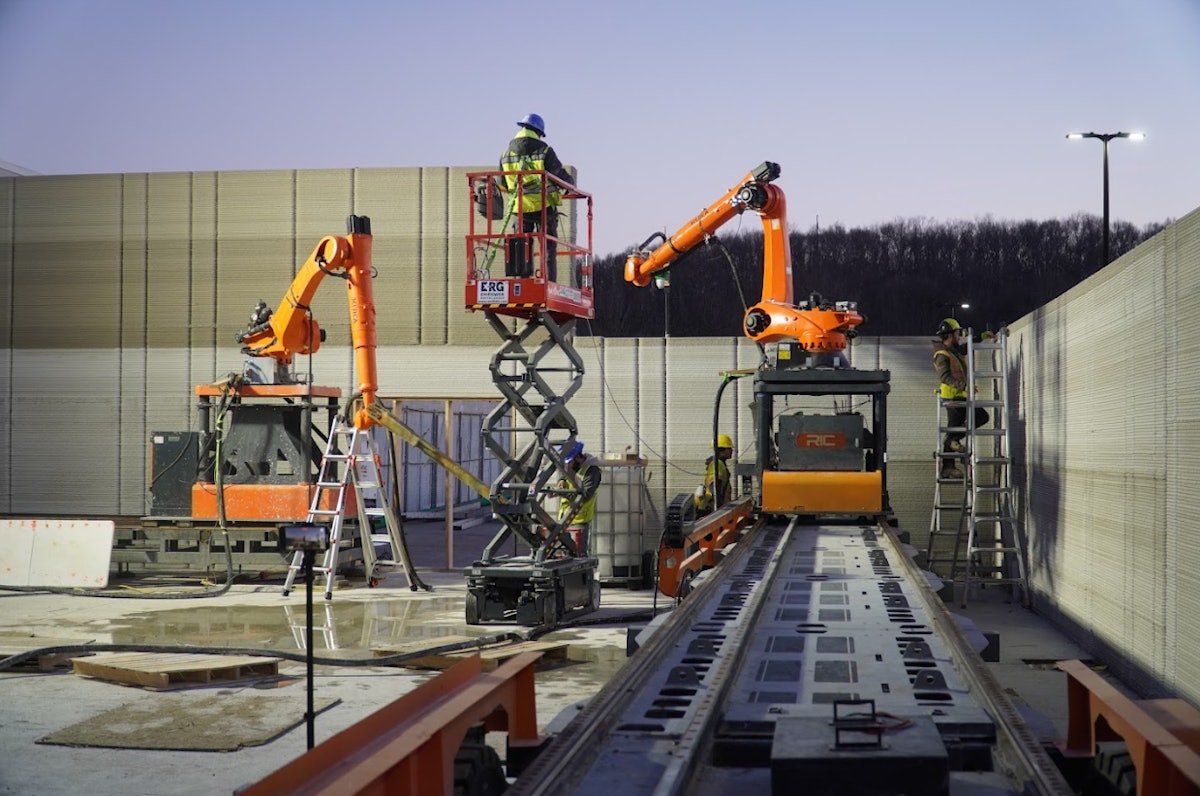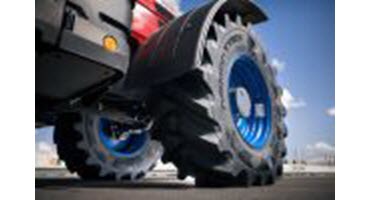Giant Robots 3D-Print a Walmart Expansion in Seven Days
The 5,000-square-foot expansion was completed in one week using five workers and two 3D concrete printing robots.

Colorado-based construction company Alquist 3D completed a 5,000-square-foot expansion to a Walmart in Huntsville, Alabama, in just seven days using five workers and two 3D concrete printing robots.
The added commercial space features 16.5-foot-tall walls and will be used as a delivery warehouse for the retailer. The project was completed two weeks ahead of schedule, showcasing the substantial time and labor savings that can be achieved using the latest technology on commercial construction projects. Alquist 3D says a 20- to 30-person crew is typically required for a build of this scale using traditional concrete masonry unit construction methods.
The company used the lessons learned from its first 8,000-square-foot Walmart extension in Tennessee, which took 45 print days to complete, to increase efficiency on its second go-around. “We were able to minimize downtime to near-zero, thanks to the valuable insights gained from Tennessee and our team’s ability to adapt quickly,” said Ryan Cox, COO of Alquist 3D.
Two RIC Technology RIC-M1 Pro robots equipped with custom-made tool heads by Alquist 3D were used to continuously print the 60-plus-foot-long wall segments, at a speed of 200 millimeters per second. RIC says it works with various material suppliers, including Quikcrete and Sika, allowing contractors to choose the best concrete mix for project needs and environmental conditions, as temperature extremes can cause hoses to clog or the concrete to cure too quickly.
While traditional 3D printing’s gantry systems require two to three days for setup, RIC says its mobile construction robots require little assembly and are ready to work in 2 to 4 hours. The RIC-M1 Pro is designed to print two-story residential and commercial structures up to 20 feet high. Its new RIC-Primus model can print up to 32 feet high.
The robot moves across a rail system as it lays the material. Advanced robotic controls ensured smooth transitions around corners, a common challenge in 3D concrete printing, RIC says.
“For the first time, we’re not talking about the ‘potential’ of 3D printing – we have delivered real savings in time and labor," said Ziyou Xu, founder of RIC Robotics. “This project proves robotic 3D construction is a commercially viable solution for large-scale developments. And this is just the beginning.”
Check out the images below for a closer look at the project:
 RIC Technology
RIC Technology
 RIC Technology
RIC Technology
 RIC Technology
RIC Technology
 RIC Technology
RIC Technology
 RIC Technology
RIC Technology

 machineryasia
machineryasia 







